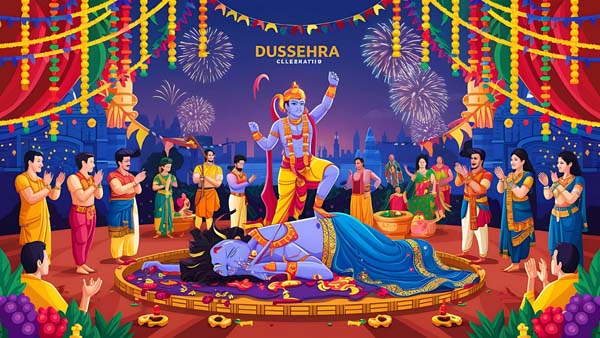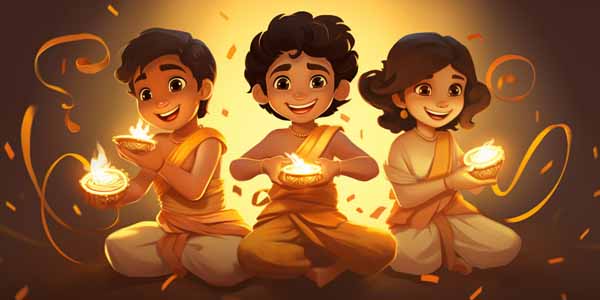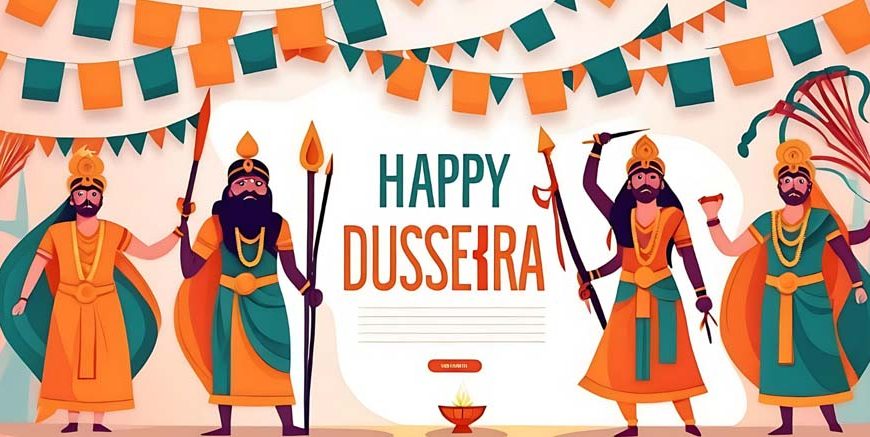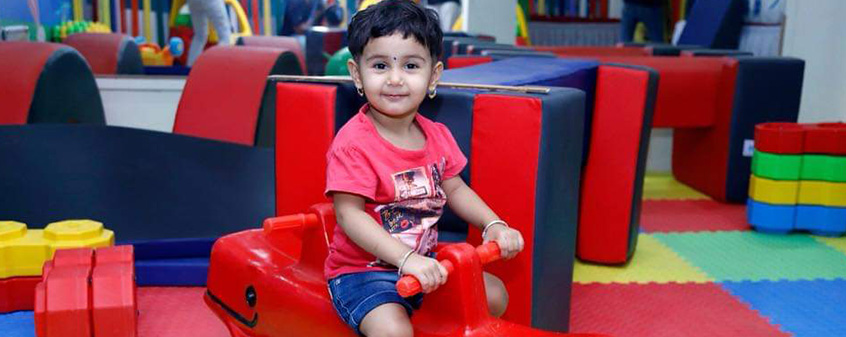Dussehra, also known as Vijayadashami, is one of India’s most vibrant and meaningful festivals. This occasion celebrates the eternal truth that good always triumphs over evil. Through the Dussehra story, children learn important lessons about courage, morality, and the rewards of righteous living. In this blog, we’ll explore the Dussehra story for kids, understand why Dussehra is celebrated, and learn how families and communities mark this festival across India.
What is the Dussehra Festival?
The Dussehra festival is a major Hindu celebration observed across India and South Asia, usually in September or October depending on the lunar calendar. It symbolises the victory of virtue over arrogance and cruelty. Beyond being a religious event, Dussehra is also a cultural celebration of art, music, theatre, and community spirit. Its significance is not only found in mythology but also in its message of hope and unity, making it a favourite festival for families and children.
The Dussehra Story
A long time ago in ancient India, there lived a powerful demon king named Ravana. Known for his intelligence and unmatched strength, he ruled over Lanka with ten heads that symbolised his vast knowledge. Yet, his arrogance led him to commit grave mistakes. Ravana kidnapped Sita, the devoted wife of Lord Rama.
To rescue Sita, Rama embarked on a journey with his brother Lakshmana and his loyal devotee Hanuman, supported by an army of monkeys. The battle between Rama and Ravana was fierce and lasted several days. In the end, Rama invoked divine powers and used a mighty arrow, the Brahmastra, to defeat Ravana. With this, good triumphed over evil.
This Dasara festival story in English reminds children that pride and cruelty never last, while honesty, courage, and righteousness always win.
Also Read: Fun Activities to Celebrate Dussehra with Kids
The Triumph of Goodness
After Ravana’s fall, joy returned to the people of Lanka, and Rama reunited with Sita. When Rama, Sita, and Lakshmana returned to Ayodhya, the people welcomed them with lamps, celebrations, and love. This grand welcome later became the origin of Diwali, celebrated 20 days after Dussehra. The story reminds us that goodness brings light, peace, and happiness to society.
How is Dussehra Celebrated?

The Dussehra festival is celebrated in unique ways across India, though the message remains the same, virtue’s victory over vice. Plays called Ramlila are staged to retell the Dussehra story, where children and adults watch scenes from the Ramayana. Huge effigies of Ravana, Meghnad, and Kumbhakarna are set on fire, symbolising the destruction of evil. Families prepare festive sweets like laddoos and jalebis, and communities gather for fairs, processions, and cultural performances.
In southern India, the celebration is called Dasara, while in eastern India it coincides with Durga Puja. In Himachal Pradesh, Kullu Dussehra is a week-long event filled with cultural richness. Despite the diversity, the message of Dussehra remains universal: goodness always prevails.
The Nine Days of Navratri and Dussehra
Dussehra marks the conclusion of the nine days of Navratri, a period devoted to worshipping Goddess Durga in her various forms. Each day represents a different quality such as courage, wisdom, and compassion. Families pray, observe rituals, and celebrate the divine feminine power during Navratri. On the tenth day, Dussehra, the focus shifts to Lord Rama’s victory over Ravana, tying together the themes of both devotion and triumph. For children, this teaches the importance of patience, persistence, and faith.
Also Read: Dussehra Traditions: How Different Regions Celebrate This Victory Festival
Values Children Learn from the Dussehra Story
The Dussehra story for kids is more than just an epic battle. It carries timeless values:
- Bravery: Standing up against wrong, no matter how strong the opponent.
- Truthfulness: Upholding honesty even in the face of difficulty.
- Respect: Valuing family, friendships, and promises.
- Humility: Avoiding arrogance, as shown by Ravana’s downfall.
By sharing these lessons through interactive storytelling, parents and educators help children connect festivals with real-life values.
Eco-Friendly Dussehra Celebrations
In recent years, communities have begun adopting eco-friendly practices during Dussehra. Effigies of Ravana, once made with plastic and harmful materials, are now created using biodegradable items. Families are also finding creative ways to celebrate the Dasara festival story in English through online plays and storytelling sessions, ensuring that traditions are preserved while protecting the environment.
Celebrating Dussehra with EuroKids
At EuroKids, festivals like Dussehra are celebrated not just with joy but with purpose. Through storytelling, plays, art, and cultural activities, children are introduced to the Dussehra story for kids in fun and interactive ways. They learn about mythology, history, and values, but most importantly, they understand the spirit of goodness, courage, and kindness.
This holistic approach helps children not only excel academically but also grow into compassionate and culturally aware individuals. By celebrating festivals together, EuroKids ensures that young learners appreciate India’s diversity while carrying forward timeless traditions.
Also Read: 10 Famous Festivals in India during Monsoon
How is Dussehra Celebrated?

Dussehra is celebrated as a symbol of the victory of good over evil, and the story of Rama’s victory is played out in various parts of India during this festival. Here are a few significant highlights of the Dussehra celebrations:
- Ramlila: People perform dramatic plays of scenes from the Ramayana, the epic tale of Rama, Sita, and Ravana. These plays, known as “Ramlila,” help kids and adults alike learn about the story of Dussehra.
- Dussehra Processions: Many towns and cities hold grand processions where statues of Ravana, his brother Kumbhakarna, and his son Meghnad are ignited to represent the victory of good over evil.
- Sweets and Treats: During the festivities, delicious sweets such as jalebi, laddoos, and gulab jamun are created and enjoyed with friends and family.
- Different Names: Dussehra is known by several names throughout India. In the east, it is known as “Vijayadashami,” whereas in the south, it is known as “Dasara.” The purpose of the event, however, remains the same – the triumph of virtue over evil.
- Ten Days of Festival: Dussehra is not just a one-day celebration. It marks the end of “Navratri” (nine nights), a ten-day festival during which various depictions of the goddess Durga are worshipped. During this time, devotees ask her blessings for strength and safety. Dussehra is celebrated on the tenth day.
- Diverse Celebrations: Dussehra highlights India’s cultural diversity. Kullu Dussehra is celebrated for a week in the northern state of Himachal Pradesh, Bommai Kolu in Tamil Nadu whereas Durga Puja is held in the state of West Bengal.
- Fairs & Carnivals: Dussehra is associated with fairs and carnivals in some places, which feature rides, games, food stalls, and different types of entertainment. These activities create a joyful and cheerful ambience to the celebration, making it an enjoyable experience for children.
- Celebrations of Culture: Dussehra is a time for cultural acts such as traditional dances, music, and storytelling. It brings together communities to celebrate their heritage and customs.
- Religious Observance: On Dussehra, many people go to temples and ask for divine blessings and guidance for a successful and virtuous life. It is a time for introspection, refreshment, and spiritual development.
- Feasting: Like many festivals in India, Dussehra is an occasion for friends and family to come together and enjoy delicious traditional treats and dishes.
- Creative Expression: Dussehra often inspires artists to create elaborate rangoli designs, which are vibrant designs made on the ground using coloured powders, petals of flowers, or grain. During the festival, these designs constitute a form of creative expression.
- Ravana’s 10 Heads: Ravana, the demon king, is sometimes represented with 10 heads, which symbolise his vast knowledge and strength. It also depicts his hubris and ego, which eventually led to his demise.
- Environmental Concerns: During Dussehra, several communities are embracing eco-friendly practices. Effigies of Ravana, which were historically fashioned of environmentally hazardous materials, are now being crafted with biodegradable materials.
- Global Celebrations: Dussehra is a festival observed not only in India but also by Indian communities globally. It is a time for Indians living overseas to reconnect with their cultural heritage and celebrate with their friends and neighbours.
Dussehra is not just a festival but a rich tapestry of cultures, stories, and principles that bring communities together. It is a time to rejoice in the triumph of good over evil, to seek blessings for a successful future, and to revel in the vivid culture and celebrations that make this festival so unique.
Conclusion
In fostering a holistic learning environment, EuroKids played a pivotal role in helping students learn about the rich culture and festivals of India. Through a combination of interactive storytelling, and cultural celebrations, EuroKids ensures that young learners not only grasp the significance of festivals like Dussehra but also appreciate the values and traditions they represent. For more such content you can go to EuroKids Blogs.
By imparting these lessons, EuroKids not only prepares children for academic success but also instals a deep appreciation for the diverse cultural tapestry that makes India unique, fostering a sense of unity and understanding among the youngest members of our society.
Related Blogs:
- The Significance of Durga Puja: Celebrating the Triumph of Good Over Evil
Discover the importance of Durga Puja, a festival that honours Goddess Durga and her victory over the demon Mahishasura. This blog explains the rituals, traditions, and cultural spirit behind the festival, helping children understand why it is celebrated with such grandeur. - 10 Fabulous Facts about Diwali for Kids: Diwali, the festival of lights, is one of the most loved celebrations across the world. This blog introduces children to fun and fascinating facts about Diwali, why diyas are lit, the meaning behind fireworks, and the stories associated with the festival. A perfect read to spark curiosity in young minds.
- Transform Your Home into a Festive Wonderland with Navratri Decoration Ideas
Navratri is all about devotion, colours, and creativity. This blog shares simple and exciting decoration ideas that families can try together at home. From rangolis to traditional décor, children can actively participate and feel connected to the spirit of the nine-day celebration.
















